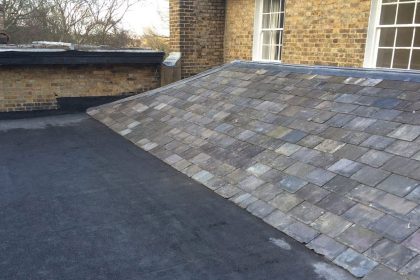 Is It Safe to Walk on My Roof?
Is It Safe to Walk on My Roof?
In general, walking on the roof of your property isn’t a safe. Any repairs that require access are best left to the professionals, but if you’re an expert DIYer (and have a good head for heights) you might want to try minor jobs yourself. If so, it’s essential to take precautions.
Reasons for Walking on a Roof
The most common reason for accessing your roof, and the only good reason on a pitched roof, is for repair work. While substantial repairs shouldn’t be undertaken by a DIYer, however skilled, you may want to try small jobs like replacing a single broken tile or cleaning off mould or moss.
A flat roof could also need minor repairs, but you may also want to use it to reach other parts of your building. For instance, the flat roof of a single-storey extension may be the best way to access a window for repairs or cleaning. A flat roof can also sometimes be used for leisure purposes — but only if it’s suitable.
Pitched Roofs
If you’re going up onto a pitched roof, it’s essential to take safety precautions. You should wear a hard hat and a safety harness attached to a firmly secured line. Also, make sure you have someone down below who could phone the emergency services if something goes wrong.
Besides the danger to you, you risk cracking tiles by walking on them. Wear soft shoes, or even better walk pads which will distribute your weight, and keep as much as possible to flat areas or valleys. If you have to step on the pitched sections, tread on the places where the tiles overlap and try to keep the weight distributed evenly between your feet.
Flat Roofs
A flat roof is less precarious than a pitched one, but you still run the risk of damaging the felt and potentially going through the membrane. You’re less likely to cause damage on a warm day, and it’s generally advisable to lay boards across it to walk on.
A flat roof can only be used for recreational purposes if it’s constructed to take the weight of continual walking and any equipment you bring up. If you’re not sure about this, you should have it surveyed by a structural engineer before attempting this use.
While your roof isn’t necessarily a no-go area, it’s generally better to leave it to the professionals. Feel free to get in touch if you want to know more.









